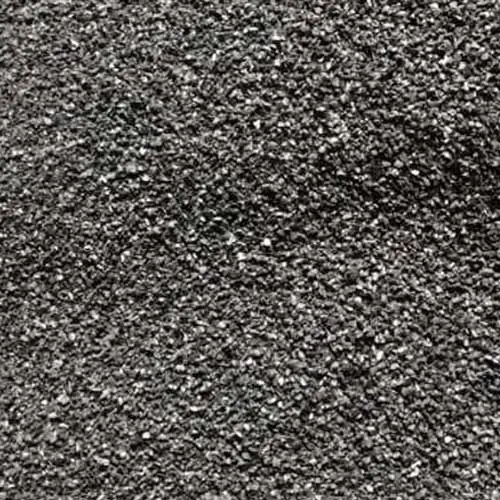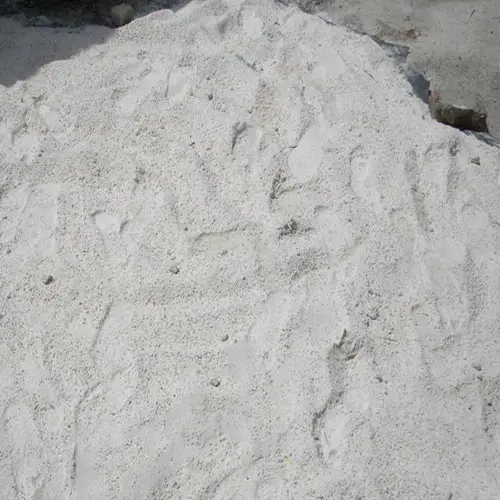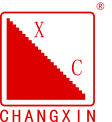In the traditional production process of ductile cast iron, about 10% of carbon scrap is generally used for dosing. This paper only deals with the production of ductile iron in the induction furnace, improve the proportion of carbon scrap steel use, the production process should pay special attention to some of the problems. According to the production practice, put forward their own views for peer reference.
1.Ramming mass selection
(1) Scrap steel
The scrap used for the production of ductile iron shall be carbon scrap. It should not contain elements that hinder graphitization, such as chromium. More should not contain anti-spheronization alloying elements. Scrap steel should be about 30% of the block should be thick flake, can be placed flat in the furnace.
(2)Carburant
①High quality coke. Sulfur content should be low, the block size of 60 ~ 80mm, with high strength, after burning red can not be pounded into pieces.
② waste electrode block. It is best to have a certain length, easy to cut into the liquid iron.

(3)Raw iron
It is mainly used to adjust the carbon content of the liquid iron. Wish to use wC>4% high carbon low sulfur pig iron. Pig iron in the silicon content is appropriately high better, the production of ductile iron can be less silicon-iron.
(4)Spheronizers, Inoculants
Used in accordance with the traditional process, depending on the actual situation of each plant.

2.Melting
Smelting process: coke block + scrap → electrode block → heating → stripping out coke block and electrode block → sampling and analyzing carbon content → pig iron → return charge → sampling and analyzing Si, Mn → heating → ferromanganese + ferrosilicon → out of the furnace → gestation + spheroidization → casting.
Precautions in the melting process are as follows:
(1) Coke lumps are loaded at the bottom of the furnace with the aim of creating a longer soaking time of the coke lumps in the molten iron. The amount of coke lumps is about 5% of the scrap. The scrap is melted by about 50%, and the top side of the coke should be covered by a thick sheet of scrap. You can also use 60 ~ 80 mm of waste electrode block instead of coke loaded on the bottom of the furnace as a charcoal enhancer, lower sulfur content, more favorable to obtain high-quality ductile iron.
(2) The proportion of scrap used is mainly determined by the efficiency of carbonization. For manufacturers who start to use this method to produce ductile iron, about 30% is good. After improving the efficiency of carbon increase, gradually increase the proportion of scrap steel. Excessive use of scrap steel, if the efficiency of carbon increase is not high, it will affect the carbon and silicon equivalent of the final product.
(3) After the scrap steel is melted, cut into the electrode rod, appropriately increase the temperature of the furnace to improve the efficiency of carbon increase. However, the furnace temperature is too high, increasing power consumption, and the furnace lining is also unfavorable.
(4) After the carbon content is predicted to be high enough, the coke blocks and electrode rods are stripped out and samples are taken to analyze the carbon content.
(5) Based on the analysis results, calculate the amount of pig iron added and the amount of ductile iron used in the return furnace.
(6) Decide whether the total amount of liquid iron can be replenished with refurnace charge based on the estimated silicon content.
(7) Return furnace material melted, take samples to analyze the content of Si, Mn and other alloying elements.
(8) Appropriately increase the liquid iron temperature, in accordance with the analysis results of the alloying elements to make up for the full, to reach the furnace temperature before leaving the furnace to add ferrosilicon.
(9) Ferrosilicon is melted to a molten state and immediately removed from the furnace.
(10) Spheronization, gestation and casting are carried out as usual.
3.Calculation of compositional adjustments
As we all know, the mechanical properties of ductile iron mainly depend on the chemical composition, cooling rate (cast ductile iron) and heat treatment process. Chemical composition is the internal cause, is fundamental, and is variable, almost every furnace is not the same. Therefore, the chemical composition must strengthen the test, carefully adjusted, should not be used “fixed ratio production”. In the chemical composition, carbon equivalent is particularly important. In particular, the use of scrap steel as the main charge production of ductile iron, because it is difficult to control the efficiency of carbon increase, carbon equivalent fluctuations, and therefore pay particular attention to the adjustment of carbon equivalent.
(1) Calculation of pig iron addition Calculate the addition of pig iron according to the analysis of carbon content. In fact, it is to adjust the carbon equivalent of ductile iron, so that the carbon equivalent of the melt formed by pig iron and scrap steel to reach the carbon equivalent of ductile iron.
The amount of pig iron added = the amount of scrap steel added × (ductile iron requirements of carbon content – analysis of carbon content) / (pig iron carbon content – ductile iron requirements of carbon content)
(2) Calculation of the amount of returned ductile iron added The carbon equivalent of returned ductile iron is basically normal, and the amount added is not large. Therefore, after the return furnace iron added, the whole furnace liquid iron carbon content is qualified.
Furnace ductile iron added = total amount of charge – the amount of scrap added – the amount of pig iron added
(3) Estimation of silicon content Calculation formula is as follows:
Silicon content ≈ [(scrap + pig iron + back to the furnace ductile iron to join) × silicon content / total amount of charge] × 100% ≤ the original liquid iron allowable silicon content
Estimated silicon content is too high, add an appropriate amount of ductile iron back to the furnace, switch to an equal ratio of 9:1 of pig iron and scrap to make up for the total amount of furnace charge.
(4) Calculation of ferrosilicon addition Calculation formula is as follows:
Ferrosilicon addition = [total charge × (ductile iron requirements of silicon content – breeding silicon increase – spheroidization silicon increase – analysis of silicon content)] / ferrosilicon silicon content
(5) Manganese and other alloying elements added Calculation formula is as follows:
Alloying iron addition = total amount of charge × (alloy content required for ductile iron – analyzed content) / alloying element content in alloying iron
Burning losses are not counted in any of the above calculations. This is because melting ductile iron in the induction furnace, the elements of the burnout is not big, at the same time, iron also has a certain burnout. If special circumstances are encountered, attention should be paid to the burnout.

Examples of ingredient adjustment applications:
A 1t induction furnace is used to produce pearlite ductile iron QT800-2 with a casting weight of 1000kg.
Control chemical composition is: wC = 3.5%, wSi = 2.5%, wMn = 0.5%, wP < 0.07%, wS < 0.02%, wMg = 0.03% ~ 0.06%, wRE = 0.02% ~ 0.04%.
The carbon content of the “scrap liquid” in the furnace after carbonization is 2.5%.
Amount of pig iron added = 300 × (3.5% – 2.5%) / (4% – 3.5%) = 600 (kg)
The amount of ductile iron used in the blast furnace = 1000-300-600 = 100 (kg)
Estimated silicon content = (300 × 0.3% + 600 × 1.8% + 100 × 2.5%) × 100% = 1.42%
If the spheroidizing agent to increase the amount of silicon for 0.6%, inoculant to increase the amount of silicon for 0.4%, the original liquid iron silicon content should be 1.5%, higher than the estimated silicon content. In this regard, you can use Z18 casting pig iron to adjust the carbon equivalent, the use of ductile iron back to make up the total amount of charge.
The silicon content was analyzed to be 1.38% and manganese content to be 0.15% before discharge.
Amount of ferrosilicon added = [1000 (2.5%-0.6%-0.4%-1.38%)]/75% = 1.6kg
Amount of ferromanganese added = [1000 (0.5% – 0.15%)] / 65% = 5.4kg
In conclusion
In induction furnace production, we use scrap to produce QT800-2 with strength of 800 to 1000 MPa and elongation > 4%.
At present, there is a lot of scrap steel on the market, pig iron is expensive, and quality pig iron is even more scarce. Therefore, we suggest that manufacturers with ductile iron production tasks, you can refer to the above idea, “steel instead of iron” production of ductile iron.
